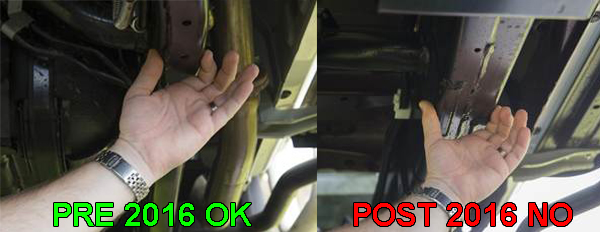- Joined
- Sep 9, 2004
- Threads
- 196
- Messages
- 12,467
- Location
- Boise - Idaho
- Website
- www.snlandcruisers.com
Here is some pics of 80 chassis rail to 79-series chassis rail. 80 is the thin rail.




79 is way beefier.
Cheers
79 is way beefier.
Cheers

